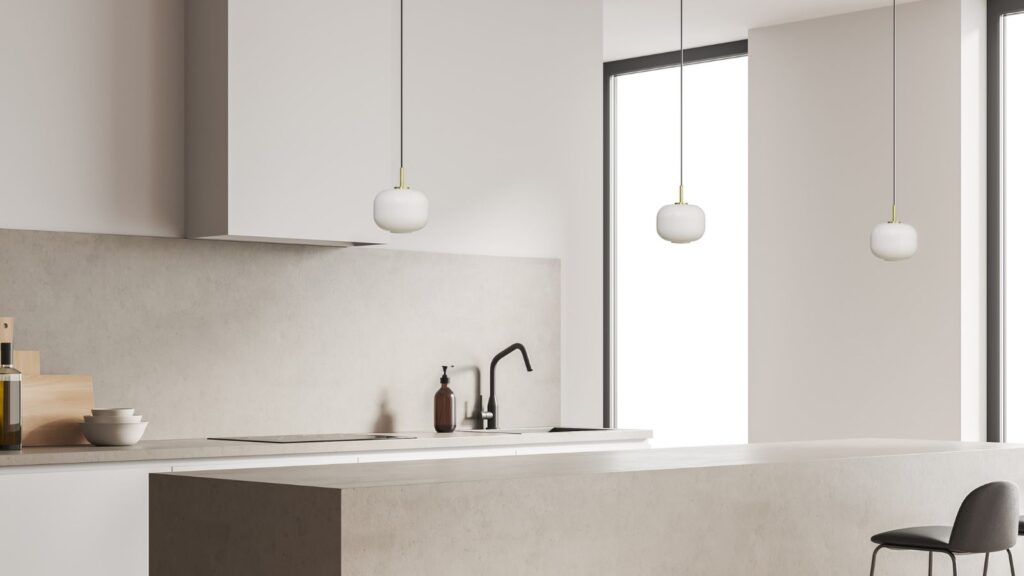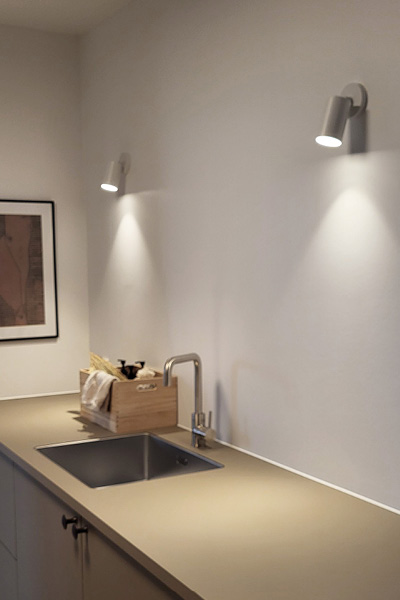Types of kitchen lighting for ambiance and functionality
- Af Søren Rasmussen
- Last updated 21. May 2024
The kitchen is often the heart of the home and a gathering place for family and friends. It’s not just a place where meals are prepared, but also a space for socializing, working, and relaxing. Therefore, having the right lighting is essential, not only for functionality but also for creating the desired atmosphere.
To achieve this, several types of kitchen lighting are typically needed: general lighting, task lighting, accent lighting, and ambient lighting. Here you can read more about the different types of lighting and how they contribute to both functionality and aesthetics in your kitchen.

A bit about the author:
Søren Rasmussen
Share post:
Related posts:
The general lighting in the room
General lighting, plays a crucial role in the design and functionality of the kitchen. This type of kitchen lighting spreads light evenly throughout the room, eliminates shadows, and provides a comfortable level of light for everyday activities. Ceiling lights, such as recessed spots, glass pendant lamps, or surface-mounted fixtures, are popular choices as they can provide a wide spread of light that covers the entire kitchen area.
It’s important to choose fixtures that complement the overall design of the kitchen while providing sufficient light for the entire room. Additionally, it’s a good idea to consider both brightness and color temperature. The ideal is to choose a brightness that is sufficient to illuminate the entire room without being glaring. A color temperature in the warm white spectrum (about 2700K to 3000K) is often recommended for kitchens as it creates a welcoming and comfortable atmosphere.

Task lighting
In addition to general lighting, task lighting is also important in a kitchen, as it ensures that you can see clearly when preparing food, reading recipes, or washing dishes. This type of kitchen lighting is more focused and should be placed where specific tasks are performed, such as over the countertop, the sink, or cooking areas.
As task lighting in the kitchen, under-cabinet lighting is a popular solution, as it directly illuminates work surfaces without casting shadows. Pendant lights with focused light over a kitchen island or wall lamps with focused light at the countertop can also add both task lighting and a design element to the kitchen.
Accent lighting
Accent lighting is a type of lighting used to highlight specific areas, objects, or special features in a room. This type of kitchen lighting is designed to attract the eye and create focal points that enhance the overall aesthetics and atmosphere of a space.
In the kitchen, accent lighting can be used in various ways to enhance the room’s appearance and functionality. For example, recessed lights, directed light sources, or LED strips can be placed to illuminate glass cabinets, display cases, or open shelves, creating a warm and cozy atmosphere.
By using accent lighting strategically, layers of light can be created that not only improve functionality but also add elegance and style to the space.


Ambient lighting
Last but not least, mood lighting, also known as ambient lighting, plays a key role in creating a welcoming and relaxing atmosphere in the kitchen. This type of lighting adds a sense of comfort and cosiness, making the kitchen a space where people not only cook, but also gather and enjoy each other’s company.
To create cosy lighting, you can use a variety of light sources such as table lamps, floor lamps or decorative pendant lights in corners that emit a soft and warm light.
Dimmable light sources are an important feature in mood lighting, as they allow for adjusting the brightness as desired, which can significantly change the ambiance of the room. Moreover, the use of lights with a warm color temperature (around 2700K or below) can help create a cozy and inviting feeling.
More good advice on kitchen lighting and dining table lamps
For even more tips on how to create the perfect light in your kitchen, explore the guide below, where in addition to types of kitchen lighting, we share additional tips and tricks for illuminating your kitchen.
If you’re looking for the ideal dining table lamp that both complements your space and fulfils your lighting needs, we’ve compiled a number of recommendations on choosing a design, number of pendants and much more in our post here: